|
|
Creator | Title | Description | Subject | Date |
| 101 |
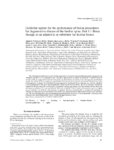 |
Dailey, Andrew T. | Guideline update for the performance of fusion procedures for degenerative disease of the lumbar spine. Part 14: Brace therapy as an adjunct to or substitute for lumbar fusion | The utilization of orthotic devices for lumbar degenerative disease has been justified from both a prognostic and therapeutic perspective. As a prognostic tool, bracing is applied prior to surgery to determine if immobilization of the spine leads to symptomatic relief and thus justify the performanc... | | 2014-01-01 |
| 102 |
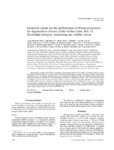 |
Dailey, Andrew T. | Guideline update for the performance of fusion procedures for degenerative disease of the lumbar spine. Part 15: Electrophysiological monitoring and lumbar fusion | Intraoperative monitoring (IOM) is commonly used during lumbar fusion surgery for the prevention of nerve root injury. Justification for its use stems from the belief that IOM can prevent nerve root injury during the placement of pedicle screws. A thorough literature review was conducted to determin... | | 2014-01-01 |
| 103 |
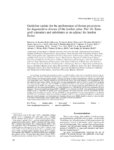 |
Dailey, Andrew T. | Guideline update for the performance of fusion procedures for degenerative disease of the lumbar spine. Part 16: Bone graft extenders and substitutes as an adjunct for lumbar fusion | In an attempt to enhance the potential to achieve a solid arthrodesis and avoid the morbidity of harvesting autologous iliac crest bone (AICB) for a lumbar fusion, numerous alternatives have been investigated. The use of these fusion adjuncts has become routine despite a lack of convincing evidence ... | | 2014-01-01 |
| 104 |
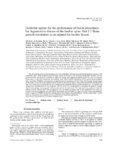 |
Dailey, Andrew T. | Guideline update for the performance of fusion procedures for degenerative disease of the lumbar spine. Part 17: Bone growth stimulators as an adjunct for lumbar fusion | The relationship between the formation of a solid arthrodesis and electrical and electromagnetic energy is well established; most of the information on the topic, however, pertains to the healing of long bone fractures. The use of both invasive and noninvasive means to supply this energy and supplem... | | 2014-01-01 |
| 105 |
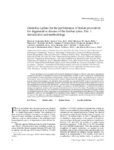 |
Dailey, Andrew T. | Guideline update for the performance of fusion procedures for degenerative disease of the lumbar spine. Part 1: Introduction and methodology | Fusion procedures are an accepted and successful management strategy to alleviate pain and/or neurological symptoms associated with degenerative disease of the lumbar spine. In 2005, the first version of the "Guidelines for the performance of fusion procedures for degenerative disease of the lumbar ... | | 2014-01-01 |
| 106 |
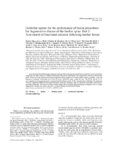 |
Dailey, Andrew T. | Guideline update for the performance of fusion procedures for degenerative disease of the lumbar spine. Part 2: Assessment of functional outcome following lumbar fusion | Assessment of functional patient-reported outcome following lumbar spinal fusion continues to be essential for comparing the effectiveness of different treatments for patients presenting with degenerative disease of the lumbar spine. When assessing functional outcome in patients being treated with l... | | 2014-01-01 |
| 107 |
 |
Dailey, Andrew T. | Guideline update for the performance of fusion procedures for degenerative disease of the lumbar spine. Part 3: Assessment of economic outcome | A comprehensive economic analysis generally involves the calculation of indirect and direct health costs from a societal perspective as opposed to simply reporting costs from a hospital or payer perspective. Hospital charges for a surgical procedure must be converted to cost data when performing a c... | | 2014-01-01 |
| 108 |
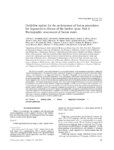 |
Dailey, Andrew T. | Guideline update for the performance of fusion procedures for degenerative disease of the lumbar spine. Part 4: Radiographic assessment of fusion status | The ability to identify a successful arthrodesis is an essential element in the management of patients undergoing lumbar fusion procedures. The hypothetical gold standard of intraoperative exploration to identify, under direct observation, a solid arthrodesis is an impractical alternative. Therefore... | | 2014-01-01 |
| 109 |
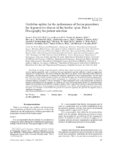 |
Dailey, Andrew T. | Guideline update for the performance of fusion procedures for degenerative disease of the lumbar spine. Part 6: Discography for patient selection | Identifying the etiology of pain for patients suffering from chronic low-back pain remains problematic. Noninvasive imaging modalities, used in isolation, have not consistently provided sufficient evidence to support performance of a lumbar fusion. Provocative testing has been used as an adjunct in ... | | 2014-01-01 |
| 110 |
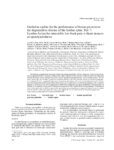 |
Dailey, Andrew T. | Guideline update for the performance of fusion procedures for degenerative disease of the lumbar spine. Part 7: Lumbar fusion for intractable low-back pain without stenosis or spondylolisthesis | Establishing an appropriate treatment strategy for patients presenting with low-back pain, in the absence of stenosis or spondylolisthesis, remains a controversial subject. Inherent to this situation is often an inability to adequately identify the source of low-back pain to justify various treatmen... | | 2014-01-01 |
| 111 |
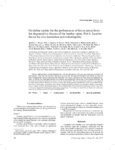 |
Dailey, Andrew T. | Guideline update for the performance of fusion procedures for degenerative disease of the lumbar spine. Part 8: Lumbar fusion for disc herniation and radiculopathy | Patients suffering from a lumbar herniated disc will typically present with signs and symptoms consistent with radiculopathy. They may also have low-back pain, however, and the source of this pain is less certain, as it may be from the degenerative process that led to the herniation. The surgical al... | | 2014-01-01 |
| 112 |
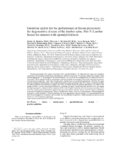 |
Dailey, Andrew T. | Guideline update for the performance of fusion procedures for degenerative disease of the lumbar spine. Part 9: Lumbar fusion for stenosis with spondylolisthesis | Patients presenting with stenosis associated with a spondylolisthesis will often describe signs and symptoms consistent with neurogenic claudication, radiculopathy, and/or low-back pain. The primary objective of surgery, when deemed appropriate, is to decompress the neural elements. As a result of t... | | 2014-01-01 |
| 113 |
 |
Dailey, Andrew T. | Guidelines for the performance of fusion procedures for degenerative disease of the lumbar spine. Part 10: fusion following decompression in patients with stenosis without spondylolisthesis | Standards. There is insufficient evidence to recommend a treatment standard. Guidelines. There is insufficient evidence to recommend a treatment guideline. Options. 1) In situ posterolateral lumbar fusion is not recommended as a treatment option in patients with lumbar stenosis in whom there is n... | Fusion; Lumbar spine; Degenerative disease; Lumbar fusion | 2005 |
| 114 |
 |
Dailey, Andrew T. | Guidelines for the performance of fusion procedures for degenerative disease of the lumbar spine. Part 11: interbody techniques for lumbar fusion | Standards. There is insufficient evidence to recommend a treatment standard. Guidelines. In the context of a single-level stand-alone ALIF or ALIF with posterior instrumentation, the addition of a PLF is not recommended as it increases operating room time and blood loss without influencing the like... | Fusion; Lumbar spine; Degenerative disease; Lumbar fusion; Interbody techniques | 2005 |
| 115 |
 |
Dailey, Andrew T. | Guidelines for the performance of fusion procedures for degenerative disease of the lumbar spine. Part 12: pedicle screw fixation as an adjunct to posterolateral fusion for low-back pain | Standard. There is insufficient evidence to recommend a treatment standard. Guidelines. There is insufficient evidence to recommend a treatment guideline. Options. 1) Pedicle screw fixation is recommended as a treatment option for patients with low-back pain treated with PLF who are at high risk... | Fusion procedures; Degenerative disease; Lumbar spine; Pedicle screw fixation; Posterolateral fusion; Low-back pain | 2005 |
| 116 |
 |
Dailey, Andrew T. | Guidelines for the performance of fusion procedures for degenerative disease of the lumbar spine. Part 13: injection therapies, low-back pain, and lumbar fusion | Standards. Facet injections are not recommended as long-term treatment for chronic low-back pain. Guidelines. There is insufficient evidence to recommend a treatment guideline. Options. The use of lumbar epidural injections or TPIs is not recommended as a treatment option for long-term relief of c... | Fusion procedures; Degenerative disease; Lumbar spine; Injection therapies; Low-back pain; Lumbar fusion | 2005 |
| 117 |
 |
Dailey, Andrew T. | Guidelines for the performance of fusion procedures for degenerative disease of the lumbar spine. Part 14: brace therapy as an adjunct to or substitute for lumbar fusion | Standards. There is insufficient evidence to recommend a treatment standard. Guidelines. The short-term use of a rigid lumbar support (1-3 weeks) is recommended as a treatment for low-back pain of relatively short duration (, 6 months). The use of a lumbar brace for patients with chronic low-back p... | Fusion procedures; Degenerative disease; Lumbar spine; Low-back pain; Lumbar fusion; Brace therapy | 2005 |
| 118 |
 |
Dailey, Andrew T. | Guidelines for the performance of fusion procedures for degenerative disease of the lumbar spine. Part 15: electrophysiological monitoring and lumbar fusion | Standards. There is insufficient evidence to recommend a treatment standard. Guidelines. Use of intraoperative SSEP or DSEP monitoring is recommended as an adjunct in those circumstances during instrumented lumbar spinal fusion procedures in which the surgeon desires immediate intraoperative inform... | Fusion procedures; Degenerative disease; Lumbar spine; Low-back pain; Lumbar fusion; Electrophysiological monitoring; EMG | 2005 |
| 119 |
 |
Dailey, Andrew T. | Guidelines for the performance of fusion procedures for degenerative disease of the lumbar spine. Part 16: bone graft extenders and substitutes | Standards. The use of autologous bone or rhBMP-2 bone graft substitute is recommended in the setting of an ALIF in conjunction with a threaded titanium cage. Guidelines. There is insufficient evidence to recommend a treatment guideline. Options. 1) Recombinant human BMP-2 in combination with HA ... | Lumbar fusion; Lumbar spine; Bone graft; Treatment outcome; Practice guidelines; Degenerative disease | 2005 |
| 120 |
 |
Dailey, Andrew T. | Guidelines for the performance of fusion procedures for degenerative disease of the lumbar spine. Part 17: bone growth stimulators and lumbar fusion | Treatment Standards. There is insufficient evidence to recommend a treatment standard. Treatment Guidelines. Either DCS or CCS is recommended as an adjunct to spinal fusion to increase fusion rates in patients who are at high risk for arthrodesis failure following lumbar PLF. Pulsed electromagnetic... | Fusion procedures; Degenerative disease; Lumbar spine; Lumbar fusion; Bone growth stimulators; Electrical stimulation devices | 2005 |
| 121 |
 |
Dailey, Andrew T. | Guidelines for the performance of fusion procedures for degenerative disease of the lumbar spine. Part 1: introduction and methodology | As scientific understanding of the pathophysiology of degenerative disease of the lumbar spine has increased, the possibilities for correcting the underlying problem and the resulting improvement in clinical function have expanded exponentially. Fueled by advances in material technology and surgica... | Lumbar fusion; Lumbar spine; Degenerative disease; Practice guidelines | 2005 |
| 122 |
 |
Dailey, Andrew T. | Guidelines for the performance of fusion procedures for degenerative disease of the lumbar spine. Part 2: assessment of functional outcome | Standards. It is recommended that functional outcome be measured in patients treated for low-back pain due to degenerative disease of the lumbar spine by using reliable, valid, and responsive scales. Examples of these scales in the low-back pain population include the following: The Spinal Stenosi... | Lumbar fusion; Lumbar spine; Degenerative disease; Practice guidelines; Treatment outcome; Functional outcome | 2005 |
| 123 |
 |
Dailey, Andrew T. | Guidelines for the performance of fusion procedures for degenerative disease of the lumbar spine. Part 3: assessment of economic outcome | Standards. There is insufficient evidence to recommend a standard for assessment of economic outcome following lumbar fusion for degenerative disease. Guidelines. There is insufficient evidence to recommend a guideline for assessment of economic outcome following lumbar fusion for degenerative dis... | Lumbar fusion; Lumbar spine; Degenerative disease; Practice guidelines; Treatment outcome; Economic outcome | 2005 |
| 124 |
 |
Dailey, Andrew T. | Guidelines for the performance of fusion procedures for degenerative disease of the lumbar spine. Part 4: radiographic assessment of fusion | Standards. Static lumbar radiographs are not recommended as a stand-alone means to assess fusion status following lumbar arthrodesis surgery. Guidelines. 1) Lateral flexion and extension radiography is recommended as an adjunct to determine the presence of lumbar fusion postoperatively. The lack ... | Lumbar fusion; Lumbar spine; Degenerative disease; Practice guidelines; Radiographic assessment | 2005 |
| 125 |
 |
Dailey, Andrew T. | Guidelines for the performance of fusion procedures for degenerative disease of the lumbar spine. Part 5: correlation between radiographic and functional outcome | Standards. There is insufficient evidence to recommend a treatment standard. Guidelines. There is insufficient evidence to recommend a treatment guideline. Options. It is recommended that when performing lumbar arthrodesis for degenerative lumbar disease, strategies to achieve successful radiogr... | Lumbar fusion; Lumbar spine; Degenerative disease; Practice guidelines; Functional outcome; Radiographic outcome | 2005 |

























